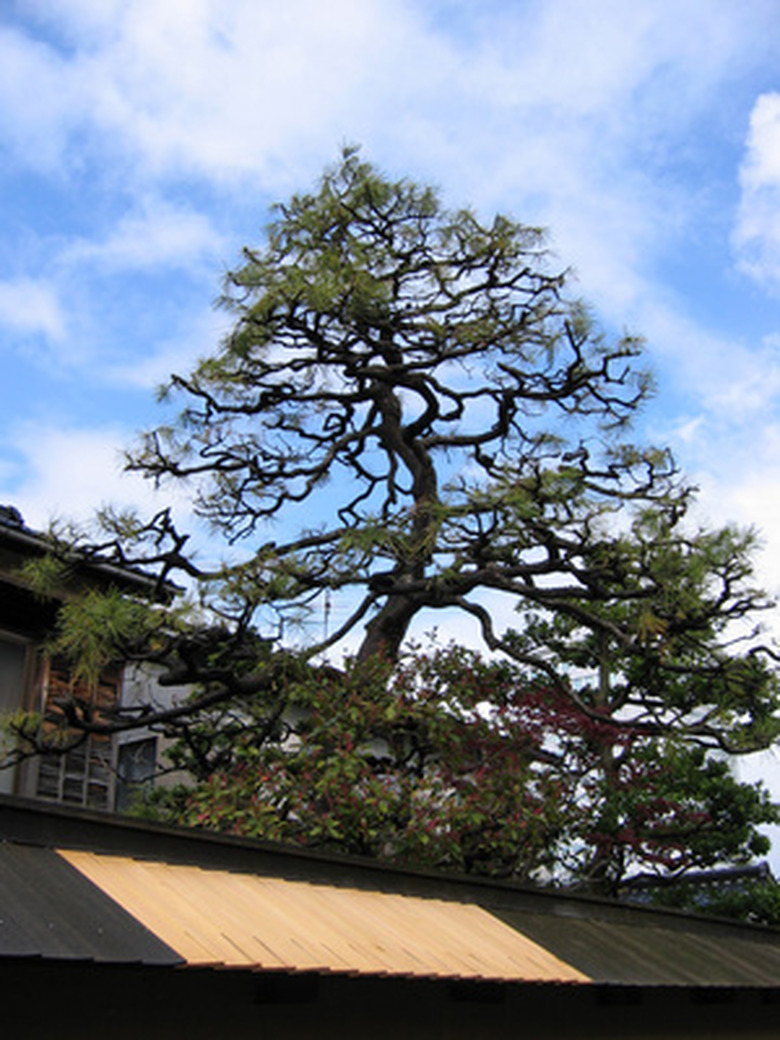Japanese Black Pine Disease
Japanese black pine is an irregularly shaped pine tree that can grow to 25 feet tall and spread between 25 and 35 feet. However, Japanese black pine is also a popular bonsai tree. By pruning the roots and judicious tree pruning, the Japanese black pine can be limited to a foot or two tall. However, both outdoor and bonsai trees can be susceptible to disease and to insect problems that can appear to be a disease.
History
Japanese black pine is an introduced tree in North America. Although native to Japan, it also grows as a native tree in parts of China, including Taiwan. A number of diseases have been described since the early 20th century. However, some of the causes were not identified for over 70 years. The presence of some pine contagions common to Japanese black pine have resulted in import bans in countries where these diseases are not yet known.
- Japanese black pine is an irregularly shaped pine tree that can grow to 25 feet tall and spread between 25 and 35 feet.
- By pruning the roots and judicious tree pruning, the Japanese black pine can be limited to a foot or two tall.
Types of Disease
Japanese pines can be susceptible to pine wilt disease. This disease was first identified in Japan around 1905, according to the U.S. Forest Service. However, the cause, the pinewood nematode, wasn't identified until 1971. Pine wilt is fatal within 30 to 90 days of infestation. Japanese black pines can also be susceptible to tip blight disease. However, insects like sawflies and the Nantucket tip moth can cause symptoms virtually identical to tip blight disease.
Treatments
How the disease or problem is treated will depend on the cause. Pine wood nematodes are always fatal. There is no treatment. In fact, in order to prevent spread to nearby trees, you will need to remove and destroy the affected trees. Needle blight and insect problems similar to needle blight aren't generally fatal to the tree. Treatment with fungicides and insecticides can sometimes be effective.
- Japanese pines can be susceptible to pine wilt disease.
- Needle blight and insect problems similar to needle blight aren't generally fatal to the tree.
Identification
Pinewood nematodes cause a general wilting of needles. After the wilting, the needles will turn yellow and then brown. Eventually, the tree will die. Nematodes spread from tree to tree via an insect called a pine sawyer. Needle blight starts with two- or three-year-old needles dying back from the tip. If the needles have narrow black bodies on the back, it is likely blight. If not, the needles could be dying because of insects.
- Pinewood nematodes cause a general wilting of needles.
Prevention
The best way to avoid problems with your Japanese black pine trees is to ensure proper growing conditions. Trees that are stressed, either by lack of sun or water, can be more susceptible to disease than healthy trees. Japanese black pines do best in full sun. Although generally considered a drought-resistant tree, giving your tree an inch or two of water per week will help to reduce the risk of stresses from lack of water.
